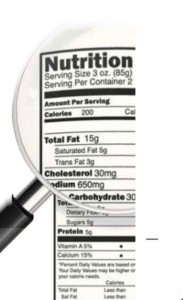By Susan Heckler
Some food and vitamin labels are not just ambiguous, but pointblank wrong. Did you know The Food and Drug Administration allows an inconsistency of 20 percent nonconformity of the true ingredient amount? What’s worse is no one is even checking whether or not it’s even true. The FDA uses an honor system as there is no agency that audits food items on a regular basis.
There are laws that control labeling of:
- Ingredients
- Nutrition information (although this can be inaccurate and fuzzy)
- Country of origin and/or manufacturer
- Other relevant health, safety, and/or agricultural information, such as the grade of beef or eggs; whether the food has GM ingredientsBack in 2008, the Government Accountability Of ce tested to see the accuracy of manufacturers’ vitamin and mineral claims. Out of the 300 products tested, 47 percent were outside of the accepted range for vitamin A, 31 percent were outside of the accepted range for iron, and 12 percent were outside of the accepted range for vitaminC.

Sadly, the responsibility for safeguarding the exactitude of food labels rests with the food manufacturer, not with the government. The FDA does conduct unsystematic sampling and analysis to ensure accuracy. If a company is found to be in violation, the FDA will take regulatory action.
A study published in the Journal of the American Dietetic Association found that the calorie content on frozen food labels was on average 8% higher than the label claimed and on restaurant menus an average of 18% higher.
No answers, just more questions…sorry.
